The main purpose of the article is to prove that learning the first foreign language can influence further linguistic studies, either in a positive or negative way, due to the previously developed strategy of language learning and organisational aspects of the educational process. In addition, the article investigates possible factors which contribute to second language acquisition and evaluates the relevance of the studying aspects on the basis of the analysis of the survey conducted among students of «Moscow Pedagogical State University» whose major is directly connected with linguistics.
Keywords: foreign languages, the second foreign language, language learning, methods of language learning, bilingualism, students of a linguistic institute.
Данная статья написана с целью того, чтобы подтвердить или же опровергнуть теорию о том, что изучение первого иностранного языка способно облегчить дальнейшее изучение языков исходя из правильно проработанной стратегии и организационных аспектов данного процесса. Также это исследование представляет возможные факторы, которые влияют на изучение второго иностранного языка и оценивает их релевантность на основе анализа результатов опроса студентов Московского педагогического государственного университета, в образовательные программы которых входит изучение двух и более иностранных языков.
Ключевые слова: иностранные языки, второй иностранный язык, изучение иностранных языков, методика изучения иностранных языков, билингвизм, студенты лингвистического профиля.
Undoubtedly, in the year when global communication plays a crucial role in society's integration and development, the knowledge of foreign languages obtains an absolute value. The fluency in one language appears to be not enough, due to that tendency students beginning from schools and universities prefer to acknowledge at least two foreign languages. Bilingualism, psycholinguistic, sociolinguistic, neurolinguistic phenomenon, is defined as a speaker's ability to use two languages for communication. The complex study of bilingualism relies on several fields within linguistics, anthropology, psychology, neuroscience, and education (Verplaetse, Schmitt, 2010, p. 355). Basic cognitive aspects of bilingualism include: (a) issues of neural representations of bilingual language processing, (b) simultaneous or successive learning or acquisition processes of the two languages, (c) representations of linguistic forms and meanings in long-term and working memory, (d) language loss and forgetting, (e) metalinguistic awareness associated with the first (L1) and the second language (L2) processing, and (f) code-switching and language mixing (Schönpflug, 2001, p. 14). Languages can be acquired at an early age when the child is born in an international family or when in the region of birth, adults tend to use two different languages for communication. Children acquiring two languages natively from childhood are called simultaneous bilinguals (Taeschner 1983, p. 4). However, this paper investigates the topic of learning the second foreign language (L2) in a more conscious age.
These days in the majority of Russian schools children are expected to learn English as their first foreign language (L1) (Ministry of Education of the Russian Federation, 2000). While acquiring the first foreign language, students follow a specific system that can facilitate the learning process, the self-learning mechanism involves learning vocabulary, grammatical functions and pronunciation which involves linguistic phenomenon (Delbio, Ilankumaran, 2018, p. 192). There are a variety of methodologies that can be used as a tool for language acquisition, for instance, grammar-translation method, bilingual method, situational and communicative approaches, etc. Some techniques can be advantageous in language learning while others can complicate the process of acquiring new foreign languages.
The main purpose of this paper is to investigate the presented field and analyse the results of the survey conducted among students of «Moscow Pedagogical State University» whose major is directly connected with linguistics, and identify whether the approaches of acquiring the first foreign language has helped students with learning a second one or the opposite, the established way of educational process complicated subsequent study.
The article is divided into a few sections: literature review, research methods, key results (quantitative and qualitative data analysis), discussion, conclusion and references used to assist the author's investigation.
Literary review
Obtaining the ability to understand and speak two languages is called bilingualism. There are two general types of bilingualism: early bilingualism which refers to the knowledge of two languages from a young age growing in multicultural society: «Children acquiring two languages natively from these early years are called simultaneous bilinguals. It is common for young simultaneous bilinguals to be more proficient in one language than the other» (Taeschner, Volterra, 1983, p. 4), and late bilingualism occurs when languages are acquired «after the critical period for language learning». According to Tucker (2018, p. 5), a child who acquires basic literacy or numeracy concepts in one language can transfer these concepts and knowledge easily to a second or third or other later-acquired languages.
Acquiring new foreign languages necessitates not only students’ motivation but also the desire. As Shepilova (2005, p. 11) mentions, the metalinguistic perception, which represents the ability to understand abstract and logical processes correlating with various linguistic systems (such as confrontation, generalisation, interpretation, etc.) possesses great importance. «Metalinguistic awareness allows students to make comparisons and generate creative hypotheses», says Pavlenko (2015, p. 1). Languages within one language family or monophyletic unit can share grammatical categories, for instance, the knowledge of the articles’ use can facilitate the process of understanding the same category while acquiring the second foreign language. This term is called «positive transfer»– «the process by which it becomes easier to learn additional languages if the grammar or vocabulary of the new language is similar to those of languages already spoken» (Pavlenko, 2015, p. 2), «linguistic borrowing which happens when the impact language does not cause linguistic mistakes in the other foreign language, but stimulates already existing patterns'' (Shcherbakova, 2003, p. 85). Besides, sister languages have words with the akin meaning or loanwords, words taken from one language and used in another (Cambridge Dictionary). For example, such Romance languages as French and Spanish both use the word «carnet» which refers to «identification card». Many students implement this technique while acquiring the second language, however, for some of them the similarities in two different foreign languages can complicate further learning, negative transfer–»the replacement of the system of rules from one language to another» (Shepilova, p. 41). In addition, Kaplan (1966, pp. 1–20) mentions foreign language learners’ «inability to compose adequate themes, term papers, theses, and dissertations» due to the lack of logic, «the basis of rhetoric, evolved out of a culture» and rhetoric itself which «varies from culture to culture and even from time to time within a given culture».
When it comes to acquiring languages from different language families, the strategy of learning may differ as those foreign languages will probably not have any grammatical, lexical, etc. correspondence. For instance, the alphabet and the manner of writing European and Asian languages are completely divergent as one language uses letters while other hieroglyphs. In this case, students should rather develop a new strategy or to use some of the hacks that can be applied while acquiring any other foreign language. It can be communication with native speakers, watching films with the use of subtitles to learn new vocabulary effortlessly which is called incidental learning, etc.
Summarising all the above mentioned, the influence of L1 while acquiring L2 is undeniable, however, the strategy of primary language learning can either speed the studying process of the second or pose difficulties.
Research methods
This article is aimed to identify whether a learning strategy of L1 can influence the acquisition of L2 and prove if the earlier studied methods have assisted the students or complicated language learning. The data is based on the Google inquiry which was conducted among students from «Moscow Pedagogical State University» whose major is directly connected to linguistics. The questionnaire, considering the age, course and gender of the respondents, consists of such questions as the identification of L1 and L2’s acquisition, year of learning, languages’ proficiency, and students’ personal opinion towards the presented topic: if L2 acquisition was facilitated or complicated with the use of developed strategies.
The figures’ analysis will be presented in two stages, first will refer to the observation of two languages chosen by respondents, which include the age of acquisition, proficiency according to basic learning skills: reading, listening, speaking and writing, assessed with the help of the Likert system where 1 is the lowest mark and 5– the highest and followed by the evaluation of the languages’ family. During the second stage, the examination of the factors that affected students' L2 learning will be discussed and accompanied with the final questionnaire results revealing the answer to the main purpose of this paper: whether previously developed knowledge of acquiring L1 facilitates learning of L2.
In order to prove the set goal of the article the quasi-experimental research was conducted and it is presented in the following section.
Key results
The study is based on the analysis of data collected from the conducted survey among «Moscow Pedagogical State University» («MPGU») students who major in Linguistics. The total number of participants is 75 (from 18 to 28 years old, including 70 female and 5 male respondents).
Part 1. In the following segment the primary information of the students’ linguistic background will be revealed.
The majority of respondents chose English as the first foreign language, learning period of which was approximately 10 years for each student.
The evaluation of basic learning skills in L1 can be precisely observed in the four pie charts, Figure 1, 2, 3, 4 (Appendix A. The results of received data).
The colour scheme of four charts is practically the same, green, yellow, purple are the major colours, indicating the high level of students' ability to communicate in L1. The reading ability in L1 is respondents’ most experienced field with 52 % (39 respondents) of five grade, 37,3 % of four (28 respondents) and 8 % (6 respondents) of three. Listening ability in L1 was evaluated with 33,3 % (25 respondents) of five, 50,7 % (38 respondents) of four and 12 % (9 respondents) of three mark. Speaking and writing abilities were assessed similarly with 29,3 % (22 respondents) of five grade, around 47 % (35 and 38 respondents respectively) of four and approximately 20 % (16 and 12 respondents respectively) of three. The percentage of one and two grades were insignificant in comparison with previously stated marks. According to students’ self-evaluation in L1 acquisition, the level of understanding and the first language application is high.
The choice of the second foreign language shows various answers. 18 students studied German, French was chosen by 16 respondents, the second foreign language for 17 students was Spanish, the other languages studied by the remaining respondents were Italian, Swedish, Turkish and such Asian languages as Thai, Korean, Chinese, Japanese. The age of acquisition differed for each student starting with several months and ending with 5–10 years.
Referring to the basic skills evaluation pie charts, all five colours can be identified, meaning that language proficiency in L2 is significantly lower. The data is illustrated in Figure 5, 6, 7, 8 (Appendix A.The results of received data). Around 50 % of the respondents rated their L2 abilities with the lowest marks (1 and 2). The easiest field to acquire was reading while listening, speaking and writing skills were evaluated practically the same.
The survey revealed that among «Moscow Pedagogical State University» students, whose major is directly connected with linguistics, English was the first foreign language to learn. According to Bammesberger (1992, p. 29–30), English belongs to Germanic languages as well as German, Dutch, Swedish and other Scandinavian languages. Languages of that group share such features as strong, weak classes, the use of modals, palatalisation of consonants, etc.
Observing other students’ choices of L2, it is necessary to state that other languages are connected to the divergent units. French and Spanish, second popular languages among respondents, are Romance languages. Chosen Asian languages belong to various families: Chinese is a Sino-Tibetan language, Thai- Kra-Dai language, Korean belongs to the Koreanic family while Japanese to the Japonic. Despite the fact of being the members of different families, some Asian languages share similar features, for instance, Korean language earlier was based on Hanja, a traditional writing system mainly consisting of Chinese characters.
Part 2.
The questionnaire revealed the answer to the question of the L1 influence on learning L2 with the subdivision into three main groups: facilitated experience, complicated process and those whose studying strategies did not have a particular effect. The information is depicted in Figure 9 (Appendix A. The results of received data).
Referring to Figure 9 (Appendix A. The results of received data), the knowledge of L1 has facilitated the L2 acquisition for 73,3 % of respondents (55 respondents) because of the presence of positive transfer. 62,7 % of students (47 respondents) noted that words with the same meaning in both languages helped them to learn L2. Due to the relation to one language family, acquisition of languages' grammatical categories (tenses, sentence structure, presence of articles) was found less complicated. Besides, such basic skills as listening and speaking developed during learning L1 also contributed to the more effective studying process. The data can be found in Figure 10 (Appendix A. The results of received data).
Only 13,3 % of students (10 respondents) stated that the experience of learning the first foreign language complicated further acquiring of the second. For the majority the biggest struggle was the appearance of new grammatical structures followed by new word stresses, alphabet and pronunciation problems. However, not only those who studied languages from different family units faced difficulties but also those who studied languages from one semantic family. The problem of negative transfer made it harder for some respondents to get used to new pronunciation of the same word or to the new meaning of the word which is spelled the same in the other language. The information is presented in Figure 11 (Appendix A. The results of received data). For the third group of students, remaining 13,3 % (10 respondents), the knowledge of L1 showed no influence on obtaining the second foreign language.
Discussion
Quasi-experimental research on the influence of L1 on L2 acquisition based on quantitative and qualitative results confirmed the reliability of the presented study. The paper investigated the linguistic field with the focus on bilingualism and its effects on two foreign languages acquisition in general terms, without consideration of existing learning approaches. The positive influence of L1 on obtaining L2 was proven by the conducted Google inquiry among students of «Moscow Pedagogical State University» («MPGU»). The choice of L1 and L2 affected learners’ response due to the languages’ structure and earlier developed knowledge and motivation. According to the study, the similarities found in two foreign languages for the most part simplify the L2 acquisition on the basis of L1 learning experience.
Conclusion
In conclusion, the precise analysis and data observation of the current study on the topic of bilingualism: the influence of first foreign language on acquiring the second foreign language conducted among students of «Moscow Pedagogical State University», whose major in linguistics, has revealed the positive impact on L2 acquisition. Despite the fact that some languages originated from different language families, the majority of respondents have not encountered difficulties in learning the second foreign language. On the contrary, some students who chose closely linked languages have faced problems related to negative linguistic transfer.
The experimental data and the paper’s content can be further investigated for more in-depth analysis of language learners' experience while studying foreign languages with the focus on particular learning methodologies.
Appendix A
The results of received data
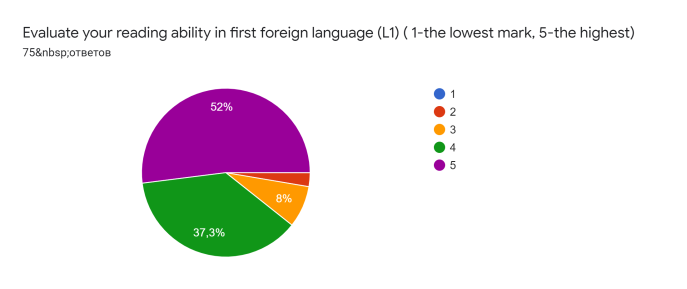
Fig. 1. The results of evaluation of reading ability in the first foreign language
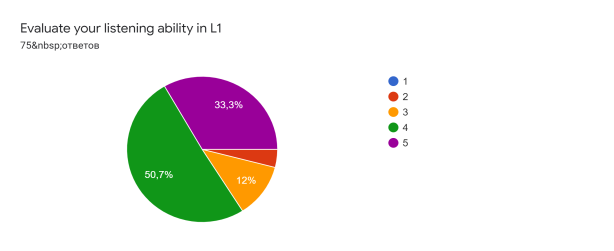
Fig. 2. The results of evaluation of listening ability in L1
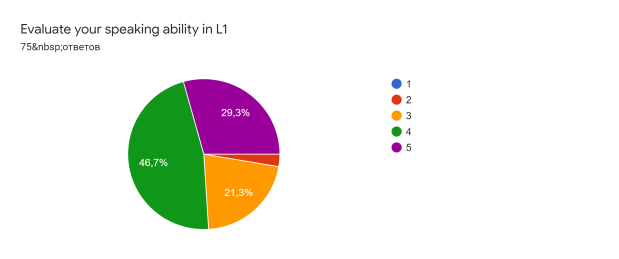
Fig. 3. The results of evaluation of speaking ability in L1
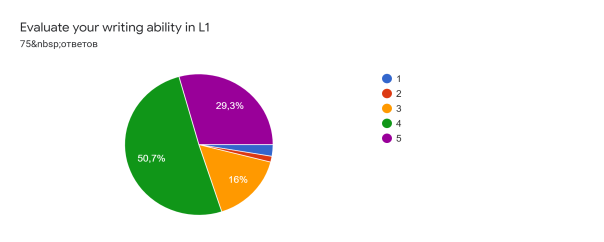
Fig. 4. The results of evaluation of writing ability in L1
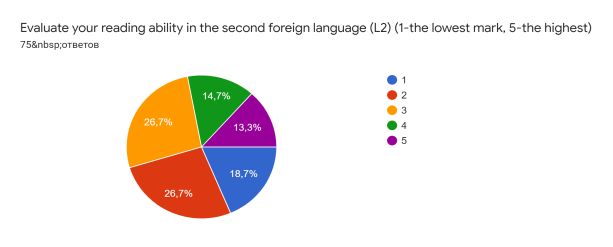
Fig. 5. The results of evaluation of reading ability in the second foreign language
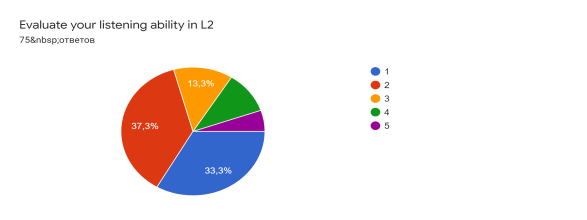
Fig. 6. The results of evaluation of listening ability in L2
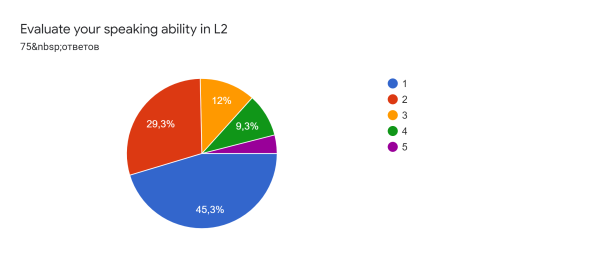
Fig. 7. The results of evaluation of speaking ability in L2
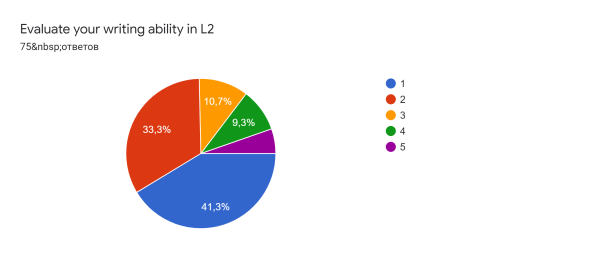
Fig. 8. The results of evaluation of writing ability in L2
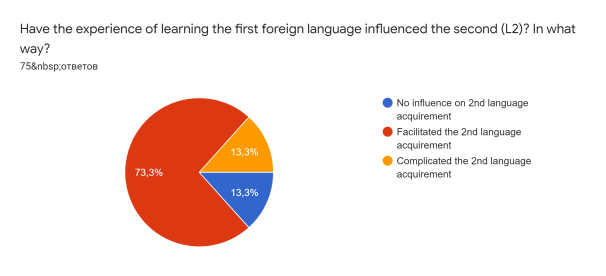
Fig. 9. The results of evaluation of L1 influence on L2 acquisition
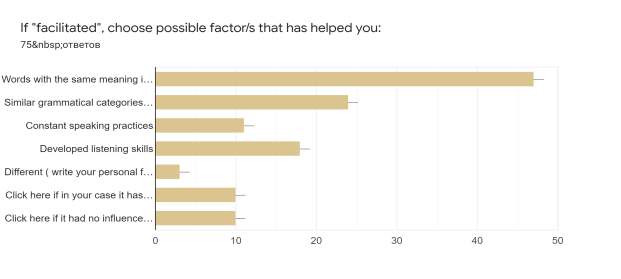
Fig. 10. Factors that facilitated L2 acquisition
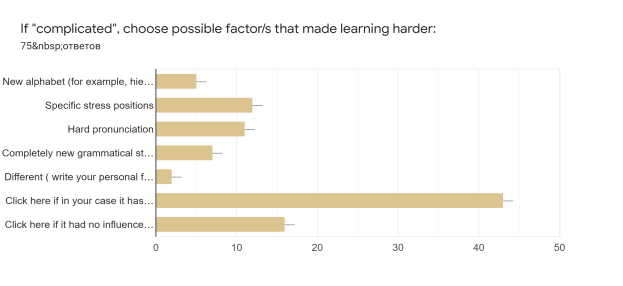
Fig. 11. Factors that complicated L2 acquisition.
References:
- Bammesberger, A. Chapter 2: The Place of English in Germanic and Indo-European — 1992. — // In Hogg, Richard M. (ed.). The Cambridge History of the English Language. 1: The Beginnings to 1066. Cambridge University Press. pp. 29–30.
- Delbio, A., Ilankumaran, M. Theories, Techniques, Methods and Approaches of Second Language Acquisition: a Psychological Perspective // International Journal of Engineering & Technology — 2018. — 7 (3.6) — p. 192
- Kaplan, Robert B. Cultural thought patterns in intercultural education –1966. — Language Learning. 16 (1–2): pp. 1–20
- Ministry of Education of the Russian Federation. On the study of foreign languages in educational institutions — 2000. — No. 3131 / 11–13
- Pavlenko, A. Can a second language help you learn a third? — 2015. — // Psychology Today: Life as a Bilingual. pp. 1–2
- Tucker, G. Richard A Global perspective on Bilingualism and Bilingual Education — 1999. –Carnegie Mellon University. p. 5
- Schönpflug, U. International Encyclopedia of the Social & Behavioral Sciences — 2001. — p. 14
- Shcherbakova, M. V. Features of teaching a second foreign language to students of language faculties // Bulletin VSU. Series «Linguistics and Intercultural Communication» — 2003. –No. 2. p. 85
- Shepilova, A. V. Theory and methodology of teaching French as a second foreign language: a textbook for university students, M.: VLADOS — 2005. — p. 248.
- Sofronova, O. Bilingualism: the Influence of the First Foreign Language on Acquiring the Second Foreign Language. Cambridge Dictionary. «LOANWORD» Definition. [Electronic source]. — URL: dictionary.cambridge.org/ru/ %D1 %81 %D0 %BB %D0 %BE %D0 %B2 %D0 %B0 %D1 %80 %D1 %8C/ %D0 %B0 %D0 %BD %D0 %B3 %D0 %BB %D0 %B8 %D0 %B9 %D1 %81 %D0 %BA %D0 %B8 %D0 %B9/loanword?q=loan %2Bword. (last viewed 29.05.2021).
- Sofronova, O. Google Forms Questionnaire: «The Ability to Speak Two Foreign Languages (Reviewing Your Experience).» [Electronic resource]. — URL: https://docs.google.com/forms/d/1VvHOBwjSOpMujbtgslrYujjozl_sMzwImrfeRWprKEE/edit (last viewed 29.06.2021).
- Taeschner, T., Volterra, V. Language acquisition and development in bilingual children — 1983. — p. 4.
- Verplaetse, L.S., Schmitt, E. International Encyclopedia of Education (Third Edition) — 2010. — p. 355







